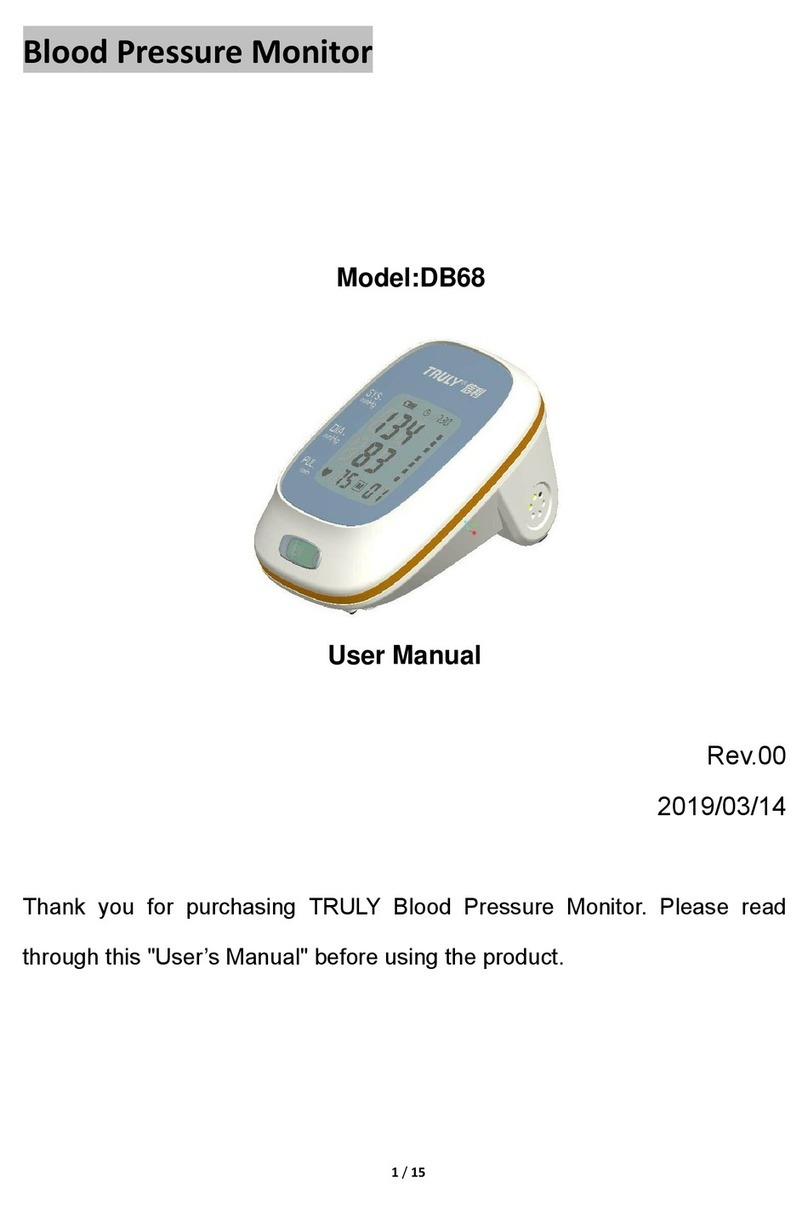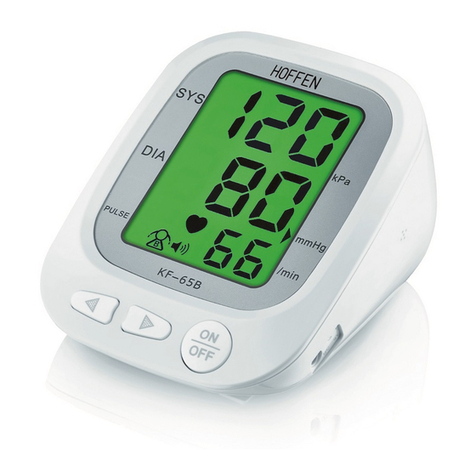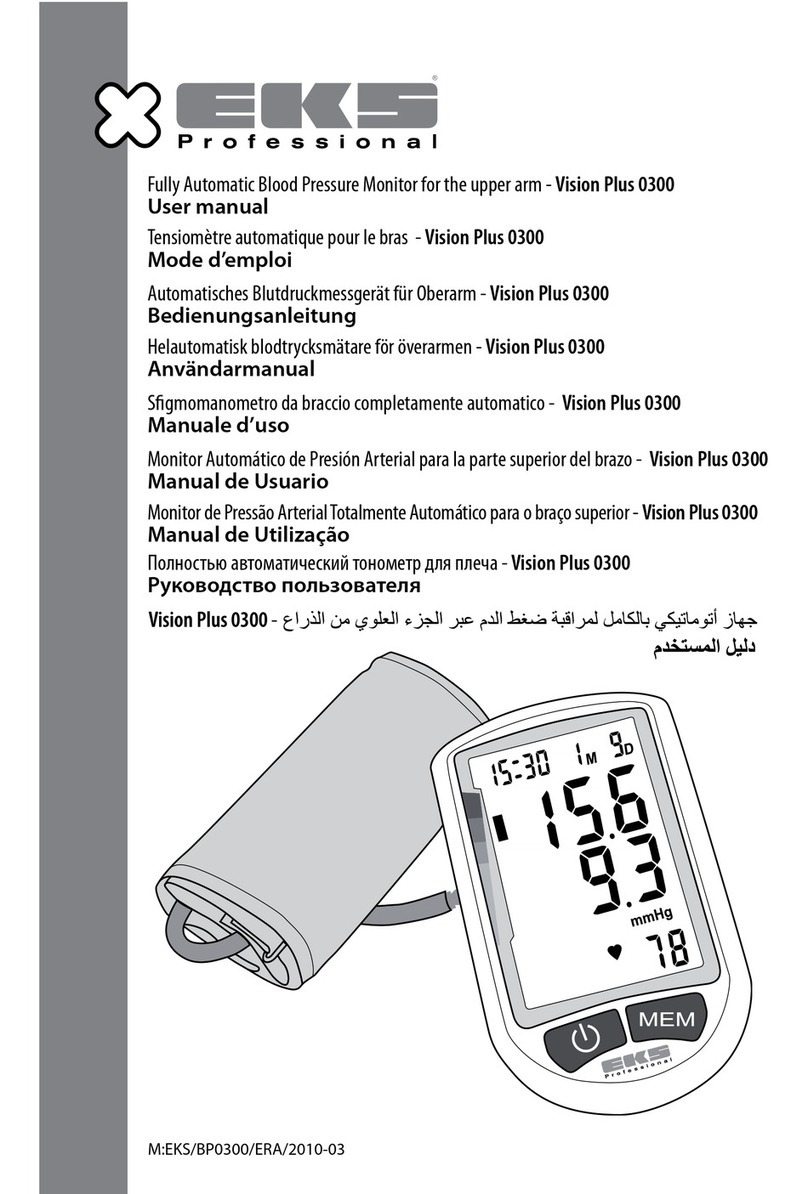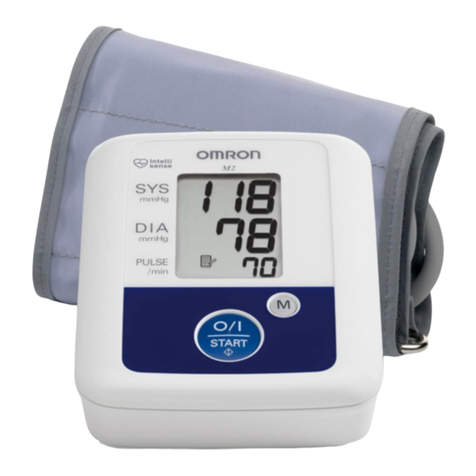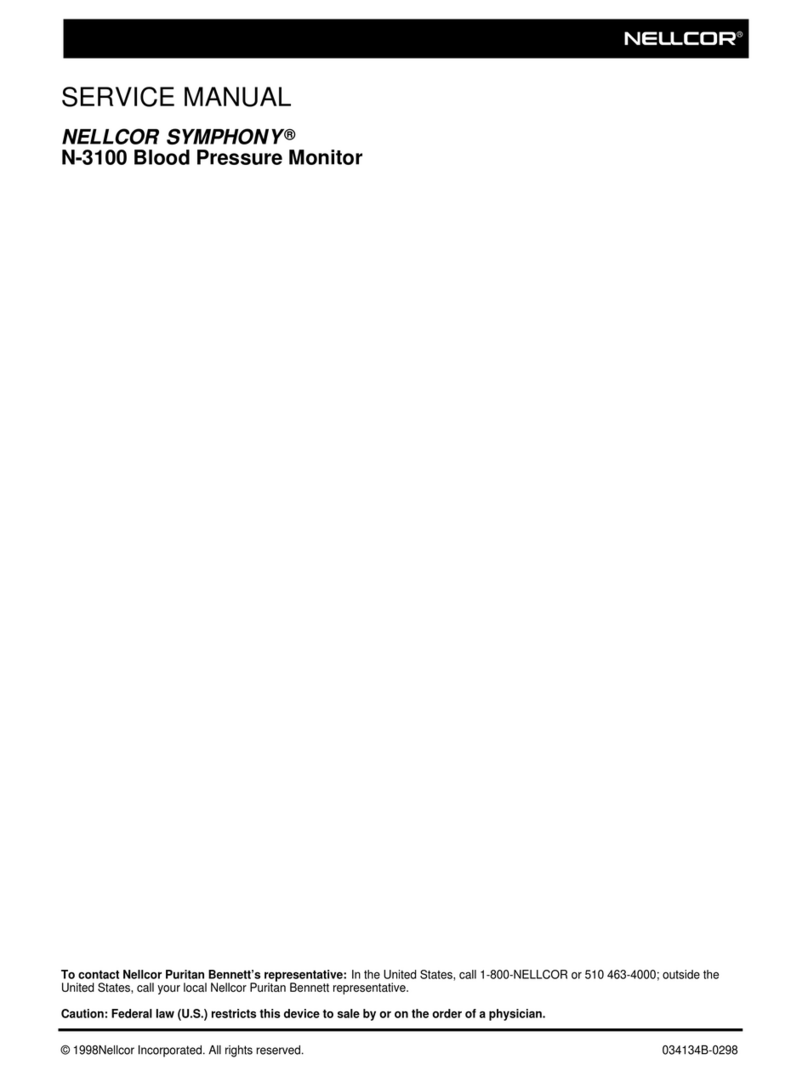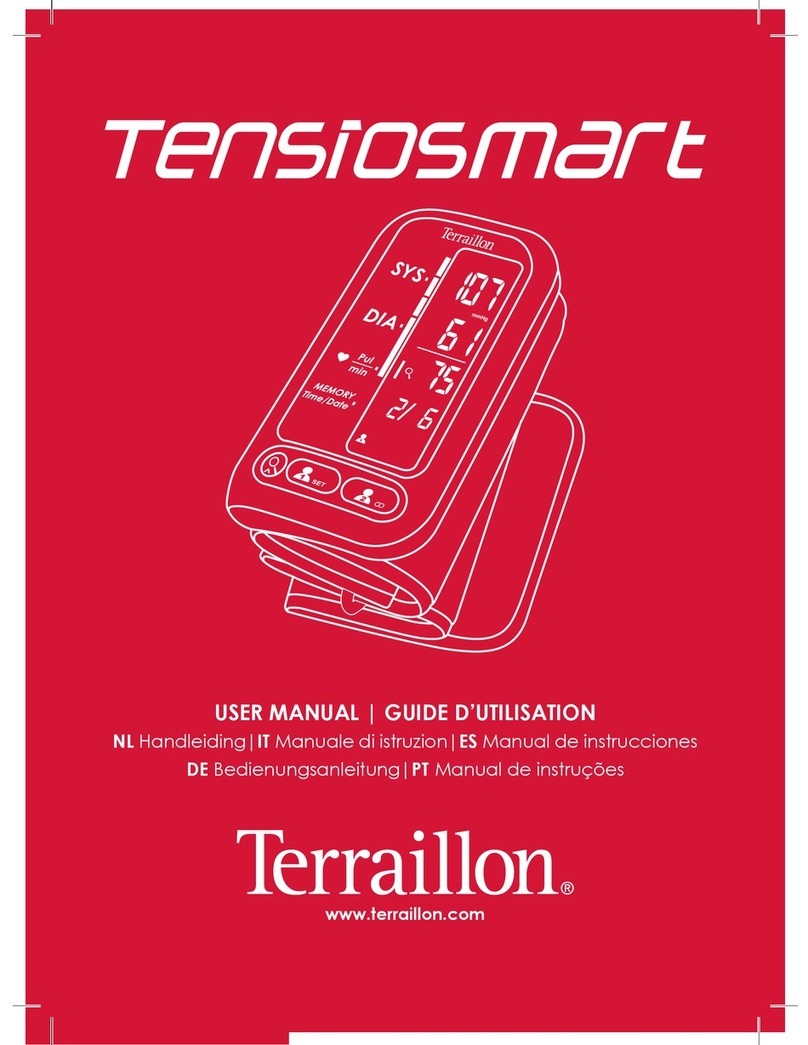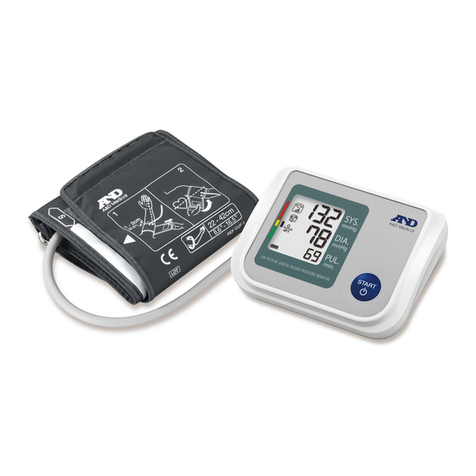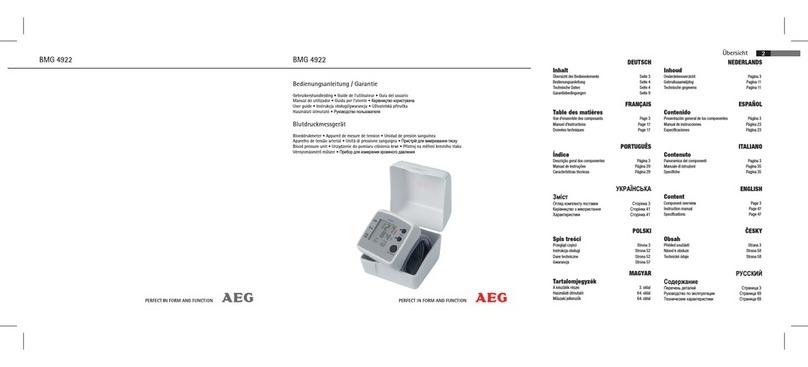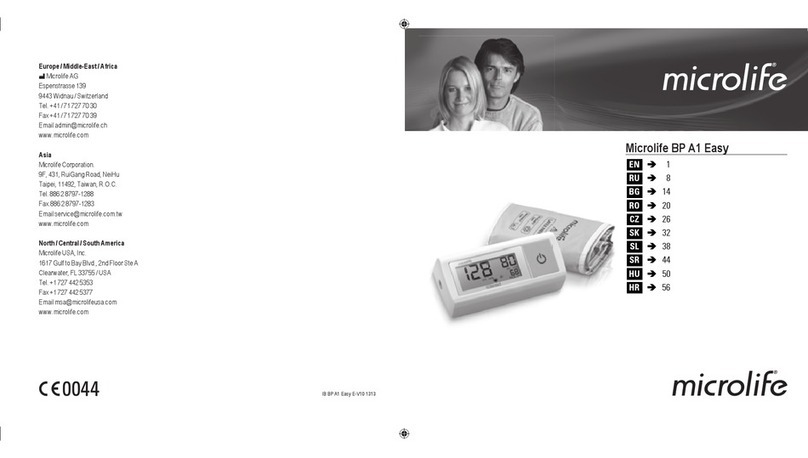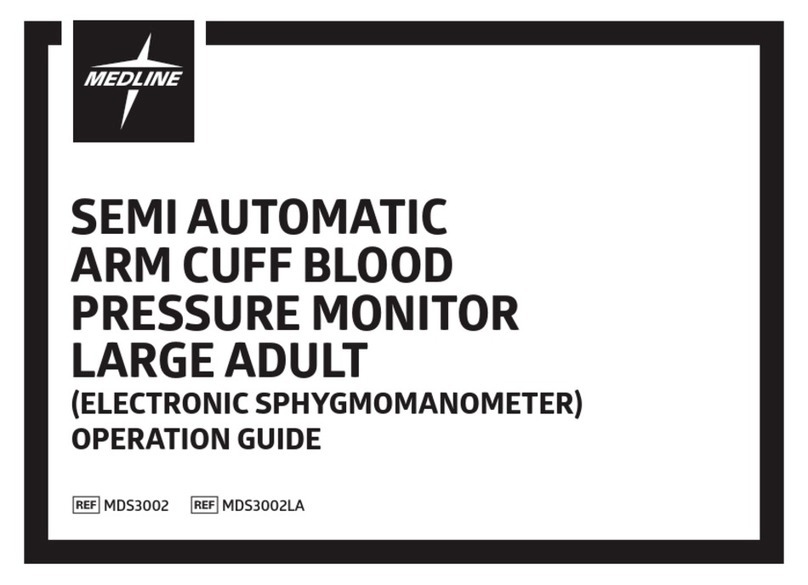Introduction to the Oscar 2 ABP System
Indications for Use
The Oscar 2 is a non-invasive oscillometric blood pressure monitor capable of
measuring an adult patient’s systolic and diastolic blood pressures. It is intended for
use as an aid or adjunct to diagnosis and treatment.
Operation
The Oscar 2 unit is worn by the patient either on a waist belt or shoulder strap and
is connected to a cuff around the non-dominant upper arm. The cuff is inflated
automatically at intervals which can be programmed during setup. Blood pressure is
measured by the oscillometric method which senses pressure waves in the artery when
occludedbypressureinthecuff.Measurementofthefrequencyofthepressurewaves
enables heart rate to also be measured.
Blood pressure measurements determined with this device are equivalent to those
obtainedbyatrainedobserverusingthecuff/stethoscopeauscultationmethod,within
the limits prescribed by the American National Standard, Electronic or Automated
Sphygmomanometers.1The Korotkoff sounds heard over the artery below the
compression cuff vary in character as the pressure in the cuff is reduced from above
systolic toward zero or atmospheric pressure. They are divided into phases. Phase
1 (K1) or systolic begins with the sudden appearance of a faint, clear tapping or
thumping sound that gradually increases in intensity. Phase 5 (K5) or diastolic begins
when silence develops, and was used to determine overall efficacy of the Oscar 2.
The Oscar 2 passes all requirements for validation by the International Protocol of the
European Society of Hypertension (ESH)2and British Hypertension Society (BHS)3.
To obtain results of these studies please send a written request to :
SunTech Medical®
507 Airport Boulevard, Suite 117
Morrisville, NC 27560-8200 USA
1.AssociationfortheAdvancementofMedicalInstrumentation.TheNationalStandardofElectronicorAutomatedSphygmomanometer.
Arlington,VA:AAMI;1996
2.Jones,S.C.,Bilous,M.,Winship,S.,Finn,P.,&Goodwin,J.(2004).ValidationoftheOscar 2 oscillometric 24-hour ambulatory blood
pressure monitor according to the International Protocol for the validation of blood pressure measuring devices. Blood Press Monitoring,
9(4),219-223
3.Goodwin,J.,Bilous,M.,Winship,S.,Finn,P.,&Jones,S.(2007).ValidationoftheOscar2oscillometric24-hambulatorybloodpressure
monitoraccordingtotheBritishHypertensionSocietyprotocol.BloodPressureMonitoring,12(2),113–117.
5












